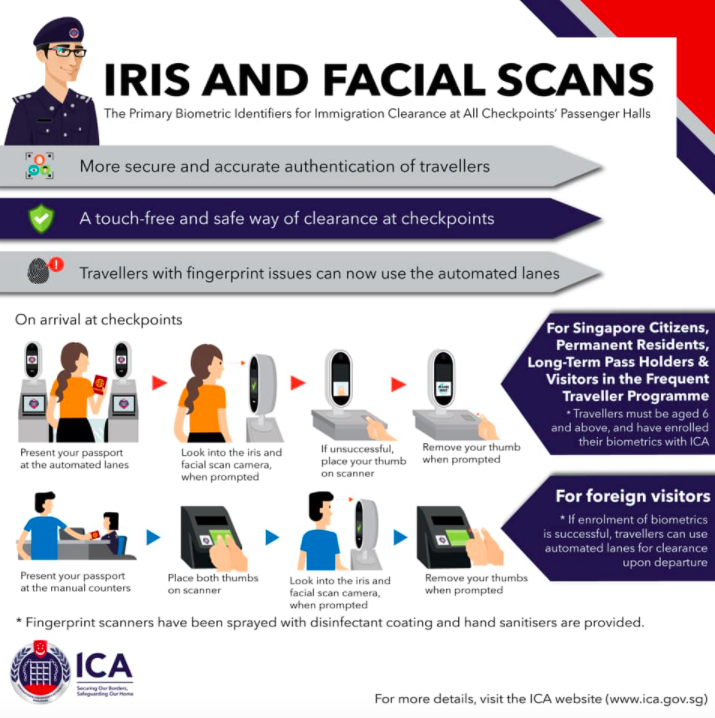SINGAPORE – Singapore is working towards moving away from fingerprint scanning at the Immigration and Checkpoints Authority (ICA) and replacing these with iris and facial scanners instead.
On October 28, 2020, the ICA announced in a press release that they have been moving towards having all of Singapore’s land, sea and air checkpoints to begin using this as a primary method while fingerprinting will be used as a secondary biometric identifier only if travellers are unsuccessful using the iris and facial scans.
According to ICA, the iris and facial scanning method was implemented back in July 2020.
Since January 1, 2017, the agency started enrolling iris images of Singapore citizens and permanent residents on the island. They also shared that iris patterns ‘have a number of strengths’ in comparison to fingerprints as biometric identifiers.
Unlike iris scans, fingerprint identification can eventually lead to issues with fingerprint verification that include ageing, dryness, and scarring. The agency also says that ‘iris patterns have a higher degree of variation and uniqueness’ in comparison to fingerprints.
In fact, iris scans can provide ‘almost 250 feature points for matching,’ whereas fingerprints only have around 100 feature points. Plus the use of specialized equipment makes it less vulnerable to misuse.
ICA also explained that in order to further strengthen the identification process, ‘we will employ iris and facial scans concurrently.’ This is to ensure that Singapore’s borders are safe, as well as establish the true identity of travellers. This immigration system will not only allow for simultaneous and touch-free iris and facial scanning, but the process is more hygienic, convenient and makes for more efficient immigration clearance.
Singapore citizens, permanent residents, long-term pass holders and international travellers on the Frequent Traveller Programme that have already enrolled their iris and facial biometrics with the ICA can already use this method when travelling. For those that have yet to enroll, ICA suggests that they request assistance if needed.
First-time visitors to Singapore will also be required to upload their iris, facial and fingerprints upon their arrival to the island via the manual immigration counters. These will be used on their exit from the country too, as well as any other future trips they make take back to Singapore.
In case iris and facial scans are unsuccessful, or travellers have yet to upload their iris and facial biometrics, they will be made to use their fingerprints to get through immigration.
However, children below six years are exempt from this method since their features are still developing.
The agency also goes on to explain that these endeavours are part of their plan to make Singapore’s checkpoints more secure and efficient. They also plan to implement the New Clearance Concept (NCC) at all checkpoints by the year 2022.
This plan will allow Singapore residents to no longer have to present their passports upon travel.
ICA also hopes to enable most foreign visitors to use automated lanes to clear immigration upon arrival, but they say that they are still working on more developments which they will provide later on.
See the full press release here. /TISG

